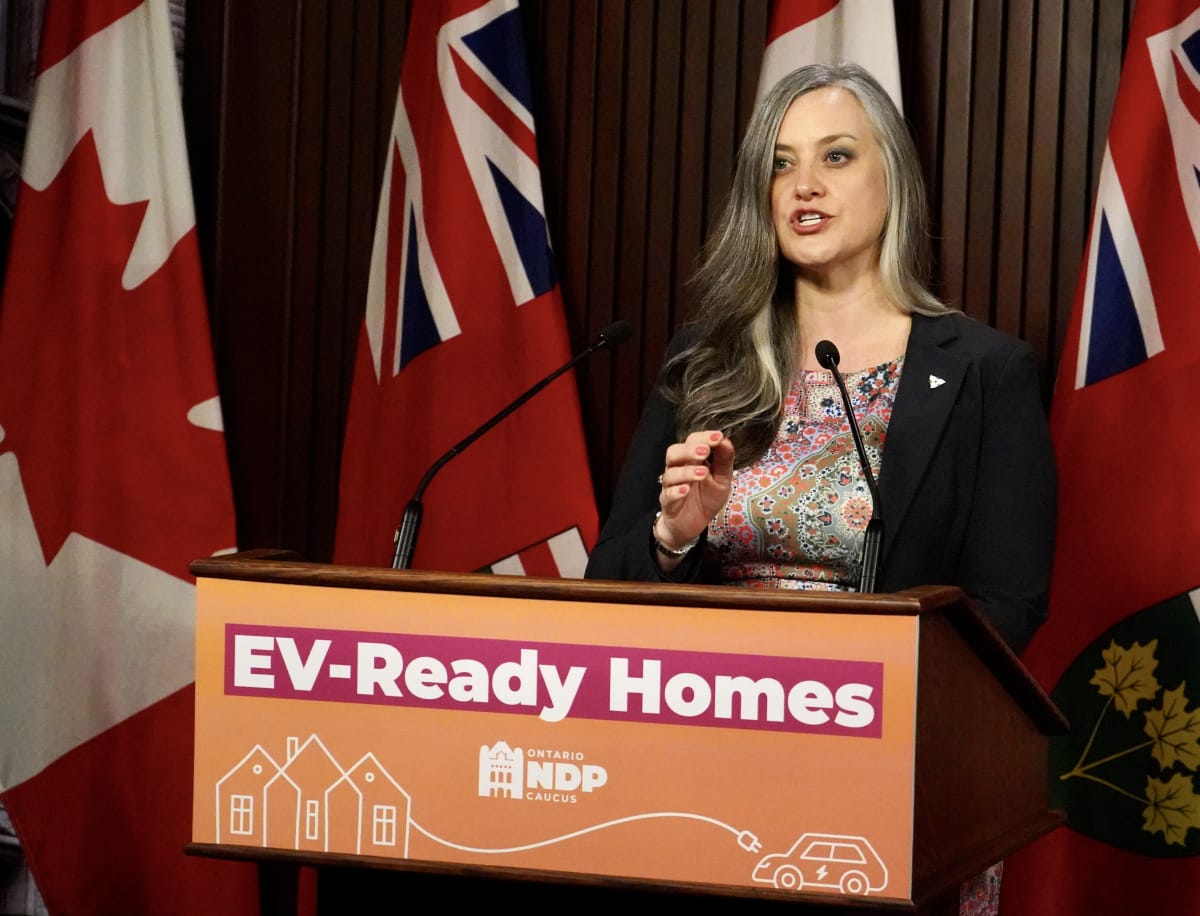Ontario MPP renews fight to force EV-ready homes
French’s proposal aims to ensure that new homes are equipped with the basic electrical infrastructure needed to install EV chargers in the future, such as wiring in garages, carports, or near driveways.

An Ontario MPP plans to renew her efforts to require developers to include electric vehicle (EV) chargers in new homes after her initial attempt failed this spring. NDP MPP Jennifer French, who previously introduced a private member’s motion mandating "rough-in" installations for EV chargers in new builds, saw her proposal rejected by the Ford government in June over concerns about increased construction costs. However, she remains optimistic about her latest proposal, the EV-Ready Homes Act (Bill 199), introduced in May and still awaiting debate.
French’s proposal aims to ensure that new homes are equipped with the basic electrical infrastructure needed to install EV chargers in the future, such as wiring in garages, carports, or near driveways. She argues that while electric vehicles are the future, the province is not yet "EV-ready," and building homes with this infrastructure now would be more cost-effective than retrofitting later.
Despite the government’s concerns about costs, French believes that the long-term benefits outweigh the initial expenses, which she notes are relatively low. She pointed out that former Liberal Premier Kathleen Wynne had included EV chargers in the building code before the Ford government removed the requirement, following developer complaints about the $500 per house cost.
French has called for the reinstatement of this requirement in the building code, emphasizing the need for EV-ready homes as part of the province’s infrastructure. Devin Arthur, director of government relations at the Electric Vehicle Society, supported her stance, explaining that retrofitting homes for EV chargers post-construction can be costly—potentially thousands of dollars—whereas integrating the infrastructure during construction could save significant time and money.
Arthur also highlighted the need for new regulations, particularly in multi-residential buildings where retrofitting costs are higher. He stated that ensuring new homes are ready for EVs would better prepare future homeowners and support the broader adoption of electric vehicles.
The Ford government’s recent Cutting Red Tape to Build More Homes Act, aimed at accelerating the construction of 1.5 million homes by 2031, did not include requirements for EV charger infrastructure. This comes despite Ontario attracting over $27 billion in automotive and EV investments in the past three years. Reports indicate Ontario lags behind globally in the ratio of public chargers to EVs, with just one charger per 25 EVs, compared to the global average of one per eight.
With more than 150,000 EVs currently registered in Ontario and projections for over a million by 2030, experts argue that expanding charging infrastructure is crucial to encouraging more people to switch to electric vehicles. They suggest that improved access to chargers could help Ontario achieve its goal of 100 percent zero-emission vehicle sales by 2035.
Arthur expressed disappointment over the rejection of French’s bill, viewing it as a missed opportunity to prepare Ontario for a sustainable future. He clarified that the proposal does not mandate full EV charging stations in every new home but simply the rough-in infrastructure to avoid higher costs later.
Canada’s National Observer reached out to the Ontario Ministry of Municipal Affairs and Housing for comments but did not receive a response in time for publication. Minister Paul Calandra, who introduced the Build More Homes Act, emphasized the importance of keeping construction costs low and suggested that decisions on EV chargers should be left to homeowners.
French remains undeterred and reported strong support from industry stakeholders, manufacturers, and the public. She believes that making new homes ready for EV chargers would encourage more people to purchase electric vehicles, supporting the market and maintaining Ontario's competitiveness in the automotive industry. “When I met with local utilities and energy experts,” she noted, “they asked, ‘Why aren’t we already doing this?’”





